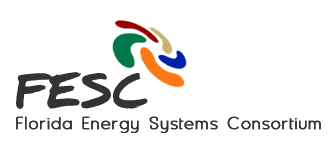Introduction
The proper selection, installation and operation of the pump, filter, heating system and cover are among some of the most important factors contributing to increased efficiency of a swimming pool.
What about pool pumps?
A pool pump can be the second largest consumer of energy in a home. By using an ENERGY STAR® certified pool pump, a homeowner will use 70% less energy with an average annual savings of $460 a year. According to the United States Environmental Protection Agency (EPA), “If all pool pumps sold in the United States were ENERGY STAR certified, the energy cost savings would grow to about $165 million each year and 3 billion pounds of annual greenhouse gas emissions would be prevented, equivalent to the emission from nearly 280,000 vehicles.” Pool pumps qualified for the ENERGY STAR label on Feb 13, 2015.
There are three basic types of pool pumps: single speed, two-speed (multi-speed), and variable speed. The single speed pump is the least expensive but will cost more to run. The variable speed pump is the most expensive but costs the least to run with payback in approximately two years.
- The least efficient pump is a single speed pump. “Pool pump speeds vary based on the pool’s operation. Filtration, for example, only requires half the flow rate of running a pool cleaner. Conventional pool pumps, with only one speed, are set to run at the higher speeds required of the pool cleaner and waste energy during filtration operation by running faster than necessary.” At this time a single speed pool pump will not qualify for the ENERGY STAR label. If one is to be developed, it must have an energy factor of 3.8 or greater to qualify. Energy Factor (EF) is the volume of water pumped in gallons per watt hour of electric energy consumed by the pump motor (gal/Wh).
- The middle of the road in terms of an energy efficient pool pump is a two-speed (multi-speed) pool pump with a low speed for filtration and a high speed for cleaning. The ENERGY STAR program has certified two-speed pool pumps.
- The most energy efficient pool pump is a variable speed pool pump which is programmed to deliver the correct flow for multiple tasks. Variable speed pool pumps cut energy costs, run quieter, require less maintenance, and last longer. The slower speed provides more effective water filtration and less strain on the pool filter, plumbing and components resulting in fewer leaks, repairs and component replacements. ENERGY STAR has certified variable speed pumps.
Multi-speed and variable speed pumps must have an EF of 3.8 or greater for the most efficient speed (the speed with the highest Energy Factor for a given pump). See the ENERGY STAR page on key product criteria for Pool Pumps.
A savings calculator has been developed by EPA and the U.S. Department of Energy (DOE) for ENERGY STAR-certified in-ground pool pumps that will estimate energy consumption, operating costs and savings. (Look for “Pool Pumps Calculator” under Resources in the menu bar on the right side of the page.) The buying guide for ENERGY STAR qualified pool pumps can be found at the same link. For an in-depth look at the possible energy savings by replacing single speed pumps with variable speed pumps see Measure Guideline: Replacing Single-Speed Pool Pumps with Variable Speed Pumps for Energy Savings.
Monetary incentives, rebate programs, and/or free or low-cost home energy audits are often available from the state or federal government as well as from many utility providers. When looking for upfront financial incentives related to renewable energy and efficiency, visit the Database of State Incentives for Renewables & Efficiency (DSIRE) website and enter your zip code. You can also search, by zip code, for special offers and rebates related to ENERGY STAR certified pool pumps.
Sizing the pump
The larger the single speed pump, the greater pumping and maintenance costs. Therefore, for increased efficiency, select the smallest-sized single speed pump possible for your swimming pool. The DOE has stated that a single speed pump no larger than 3/4 horsepower (hp) should be adequate for most residential pools. When running 24/7, this is the least efficient pump with greater energy costs over time. By cutting pumping time to six hours or less (or the adequate amount of time needed to keep water clean) and decreasing the hydraulic resistance, energy cost savings can be achieved.
To choose the right size pump, consult a pool supplier’s design chart. When using the chart, match the hydraulic characteristics of the pump to both the piping and the pool’s flow characteristics. Note that if using a solar pool heating system, you must also consider the need to pump the pool’s water to and through the collector(s).
If you decrease the pool circulation system’s hydraulic resistance, smaller pumps (that cost less) can be used by:
- substituting a larger filter (rated to at least 50% higher than the pool’s design flow rate).
- increasing the diameter (generally to 2″ PVC piping rather than the standard 1½”) or decreasing the length of the pipes, or replacing abrupt 90-degree elbow pipes with 45-degree pipes or flexible pipes.
- reducing the pump’s electricity use by up to 40% by decreasing the pool circulation system’s hydraulic resistance.
- remembering that a variable speed pump can be large in horsepower, but because the pump adjusts to the work load, it runs the majority of the time filtering at a low speed, saving energy and money.
Operating the pump
Single speed pool pumps often run much longer than necessary to mix chemicals and remove debris. As long as the water circulates while chemicals are added, they should remain evenly mixed. In addition, depending on pool location (i.e., near trees or some other source that generates water quality issues), it may not be necessary to re-circulate the water every day to remove debris, and most debris can be removed using a skimmer or vacuum. Be sure to empty skimmer baskets because clogged baskets can affect pump and system performance. In addition, it’s worth noting that longer circulation doesn’t necessarily reduce the growth of algae. Using chemicals in the water or scrubbing the walls are better methods.
It is very important that, once installed, a variable speed pump be calibrated to provide for adequate filtration, circulation, and water quality while using the lowest possible speed. After the pump has been started and is successfully circulating water through the filtration system, filtration flow rates need to be verified. “Water is supplied to the pump from both the skimmers and main drains; however, the skimmers should supply the majority of the flow. Main drain flow should complement the skimmer flow but should be minimized to prevent suction entrapment hazards. The main drain and suction covers should be visually observed. A broken or missing drain cover poses a serious health risk and should be replaced immediately, even before the pool is returned to service.” (From Measure Guideline: Replacing Single-Speed Pool Pumps with Variable Speed Pumps for Energy Savings.)
What about filtration?
Filtering is a major cost of owning a swimming pool. Try reducing your filtration time to six hours per day. If the water does not appear clean, increase the time in half-hour increments until it does. As little as three hours of pump operation a day can maintain water clarity depending on usage, weather, and debris. On average, this could reduce the electricity demand for pumping by 60%. The Florida Building Code 5th Edition (2014), Residential, Chapter 45 Private Swimming Pools, Section R4101.20 Filters, states that the “components shall have sufficient capacity to provide a complete turnover of pool water in 12 hours or less”. That does not mean it has to pump for 12 hours but must be mechanically capable of doing a complete turnover of pool water in 12 hours or less, if needed.
Programmable timers can be set to control the pump’s cycling. The Florida Building Code 5th Edition (2014), Energy Conservation requires the installation of time switches or other control methods that can automatically turn off or on heaters and pumps according to a preset schedule. See Residential Provisions, Chapter 4 [RE] Residential Energy Efficiency, Section R403.9.2 Time switches, for complete requirements and exceptions. If debris is a problem, use a timer that can activate the pump for many short periods each day. Running the pump continuously for—say—three hours leaves the other 21 hours a day for the pool to collect debris, whereas several short cycles can keep the pool clean all day. Check with the local utility company for times they suggest are the best off-peak hours in your area.
Note: If you use the services of a maintenance staff, make sure that they do not change the timer’s settings and make them aware of your end goal.
Keep the intake grates clear of debris. Clogged drains require the pump to work harder, which uses more energy. Clean your filter according to the manufacturer’s recommendations. Sometimes the operating sound of the pump changes and is detectable when it is under more strain.
Note that in addition to chlorine, which is often used to maintain sanitary swimming conditions, a number of alternatives are now on the market. Be sure to check them out with regard to your particular pool and location.
What about pool heating?
Options for heating the pool include solar energy, fossil fuels (LP gas, natural gas or oil), and heat pumps. Each option has its own advantages and disadvantages. Solar pool heating is the most cost-effective use of solar energy in Florida. A comfortable water temperature for swimming is 78 to 80 degrees Fahrenheit. As with home heating, each degree of rise in temperature increases energy costs.
Solar Pool Heater
A solar pool heating system usually costs between $3,000 and $4,000 to buy and install. Typical payback is between 1.5 and 7 years, depending on local fuel expenses. They typically last longer than gas and heat pump pool heaters. Your actual cost and payback depend on many factors: ease of installation; type of financing; location of pool in north, central or south Florida; length of desired pool season; and building code requirements. Also, check with your local utility company to see if they offer rebates. To roughly calculate the solar collector area needed to heat a pool to the comfortable swimming temperature, and for more solar pool heating information, see Sizing & Economics from the Florida Solar Energy Center.
Gas Pool Heater
Gas pool heaters are the most popular systems for heating swimming pools. A gas pool heater is most efficient when heating a pool for short periods of time, and is ideal for quickly heating pools. Therefore, gas pool heaters can be a good choice for pools that are not used on a regular basis. Unlike heat pump and solar pool heaters, gas pool heaters can maintain any desired temperature regardless of the weather or climate. The Florida Building Code 5th Edition (2014), Energy Conservation requires a gas heater to have a minimal thermal efficiency of 82% and that natural or LP gas fired heaters shall not have continuously burning pilot lights. See Residential Provisions, Chapter 4 [RE] Residential Energy Efficiency, Section R403.9.1.1 Gas and oil-fired pool and spa heaters for the complete code language.
Heat Pump Pool Heater
Heat pumps do not generate heat; they use electricity to capture heat and move it from one place to another. Heat pump pool heaters generally cost more than gas pool heaters, but they typically have lower annual operating costs because of their higher efficiencies. With proper maintenance, heat pump pool heaters typically last longer than gas pool heaters. The Florida Building Code 5th Edition (2014), Energy Conservation requires that heat pump pool heaters have a minimum coefficient of performance (COP) of 4.0.
What about pool covers?
Covering a pool when it is not in use is the single most effective means of reducing the pool’s heating costs, by as much as 50%–70%. Pool covers not only decrease pool heating costs, they also can minimize the pool’s chemical use by 35%-60%, conserve water by reducing the amount of make-up water needed to offset evaporation by 30%-50%, and reduce cleaning time by keeping dirt and other debris out of the pool. When choosing a cover, look for durability, ease of taking on and off, price, warranty, material transparency, insulation value, storage need, and safety. The Florida Building Code 5th Edition (2014), Energy Conservation requires that all heated swimming pools be equipped with a vapor retardant cover. See Residential Provisions, Chapter 4 [RE] Residential Energy Efficiency, Section R403.9.3 Covers for the complete requirement and exceptions.
For more information, please contact your professional pool dealer to help you make informed choices on all aspects of your pool’s operation.
What about licenses?
It is important to use a swimming pool contractor licensed to perform service in Florida. See the definitions of pool related licenses under references and resources at the Florida Department of Business and Professional Regulations website.
You can verify a license searching by name or license number at the DBPR website under “verify a license”. In addition to verifying licenses, be sure to check for any charges of unlicensed activity.
You can search for information about the business entity (corporation or other form of business, length of time in existence, etc.) and for other or previous affiliations by searching under the company’s name at the document searches portion of the Florida Department of State, Division of Corporations free online search service.
Check for any violations relating to workers’ compensation insurance (a common area for problems in construction) online or by calling 800-742-2214.
Your local county or municipal building department may provide verification of local or state license or any known problems. See the government section of your telephone book—look under “building,” “plans,” “inspections,” or “zoning.”
Your local court records office may allow you to search under the individual and/or business name to see if any litigation has been filed or is pending against the individual or company. See the government section of your telephone book—look under “courts” or “clerk of court.”
For any professional or trade association membership listed by the individual/company, you can usually verify the existence or validity of the entity with a simple online search.
See the Have fun in the sun and save: Choose ENERGY STAR certified pool pumps factsheet for more information.
ENERGY STAR® Product Finder
The table(s) below offer a real-time list of ENERGY STAR® Certified products related to this fact sheet. Using the vertical and horizontal scroll bars, you can look for specific manufacturer brand names, model numbers, and compare a variety of product specifications and energy performance metrics. Individual columns can be filtered using the column specific “Menu” icons adjacent to their “Information” icons. The entire dataset can be searched using the “Magnifying Glass” icon in the dark grey bar at the top of the table.
Certified Pool Pumps
References and Resources
Build It Solar. (May 2, 2006). Evaluating your site for solar energy. Retrieved May 29, 2015.
Florida Building Commission. Florida Building Code 5th Edition (2014), Energy Conservation. Retrieved May 29, 2015.
Florida Building Commission. Florida Building Code5th Edition (2014), Residential. Retrieved May 29, 2015.
Florida Department of Business and Professional Regulations (DBPR). Construction Industry Licensing Board. Retrieved June 1, 2015.
Florida Department of Business and Professional Regulations (DBPR). Licensee search. Retrieved June 1, 2015.
Florida Green Building Coalition. (May 19, 2015). Florida Green Home Certification Standard Reference Guide Version 10. Retrieved May 28, 2015.
Florida Solar Energy Center. (2008). For pools (sizing, economics, systems installation, collector ratings, system ratings, etc.). Retrieved May 28, 2015.
Florida Solar Energy Center. (1997). Measured Energy Savings of a Comprehensive Retrofit in an Existing Florida Residence. Retrieved May 28, 2015.
Florida Solar Energy Center. (2008). Sizing & economics. Retrieved May 28, 2015.
Hunt, A. and Easley, S. (May 2012). Measure Guideline: Replacing Single-Speed Pool Pumps with Variable Speed Pumps for Energy Savings. Report for the U.S. Department of Energy. Retrieved May 29, 2015.
Southface Energy Institute. (September 30, 2006). Solar Pool and Shower Heating for Communities and Multifamily Developments. Retrieved May 28, 2015.
N.C. Clean Energy Technology Center. Database of State Incentives for Renewables & Efficiency (DSIRE). Retrieved May 29, 2015.
US Department of Energy (US DOE). (May 29, 2012). Installing and Operating an Efficient Swimming Pool Pump. Retrieved May 28, 2015.
US Department of Energy (US DOE). Reduce Swimming Pool Energy Costs (RSPEC!). Retrieved June 2, 2015.
US Department of Energy (US DOE). (June 15, 2012). Swimming Pool Heating.
US Environmental Protection Agency (US EPA), ENERGY STAR Program. Dive into big savings. Retrieved May 29, 2015.
US Environmental Protection Agency (US EPA), ENERGY STAR Program. Have fun in the sun and save: Choose ENERGY STAR certified pool pumps. Retrieved May 29, 2015.
US Environmental Protection Agency (US EPA), ENERGY STAR Program. Pool pump key product criteria. Retrieved May 29, 2015.
US Environmental Protection Agency (US EPA), ENERGY STAR Program. Pool pumps for Consumers. Retrieved May 29, 2015.
US Environmental Protection Agency (US EPA), ENERGY STAR Program. Rebate finder. Retrieved May 29, 2015.
Acknowledgements
Authors: Wendell A. Porter a (2009, 2015), Christine Swanson b (2015)
a Assistant Research Scientist, Department of Agricultural and Biological Engineering, Florida Cooperative Extension Service, Institute of Food and Agricultural Sciences, University of Florida, Gainesville, FL 32611.
b Program Assistant, Program for Resource Efficient Communities, University of Florida, Gainesville, FL 32611
First published May 2009. Revised June 2015.
This is a fact sheet produced for the Florida Energy Systems Consortium (FESC). The goal of the consortium is to become a world leader in energy research, education, technology, and energy systems analysis.




